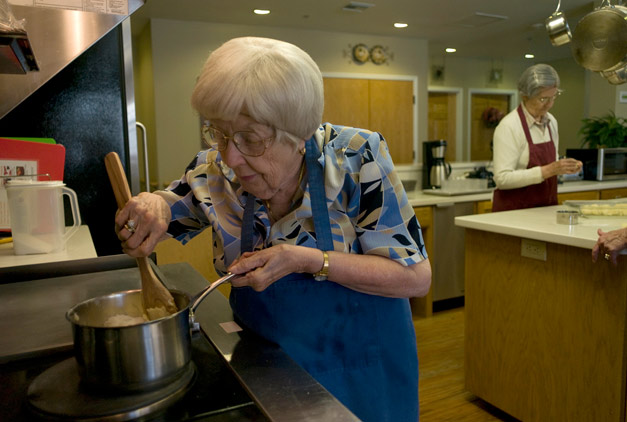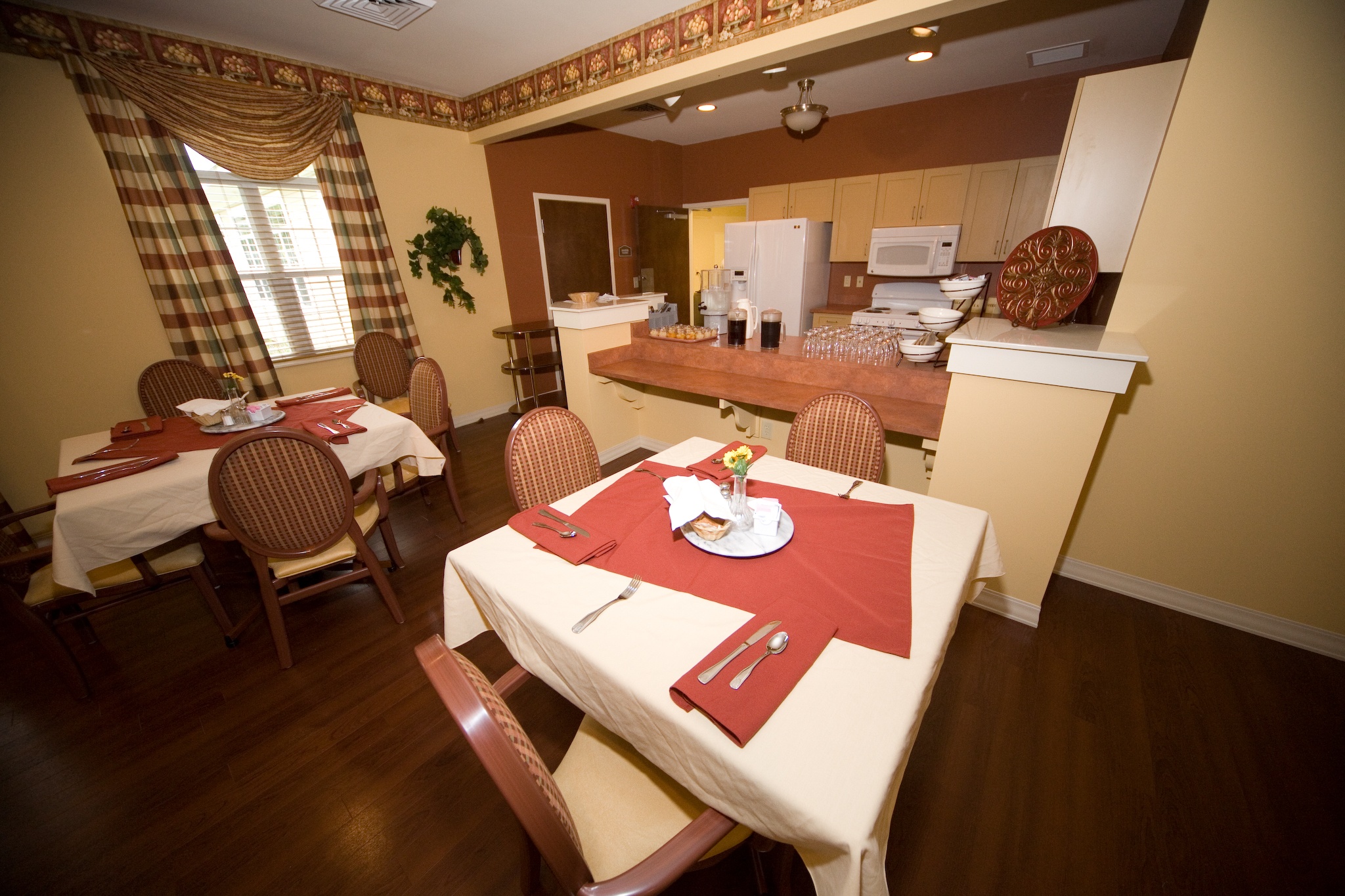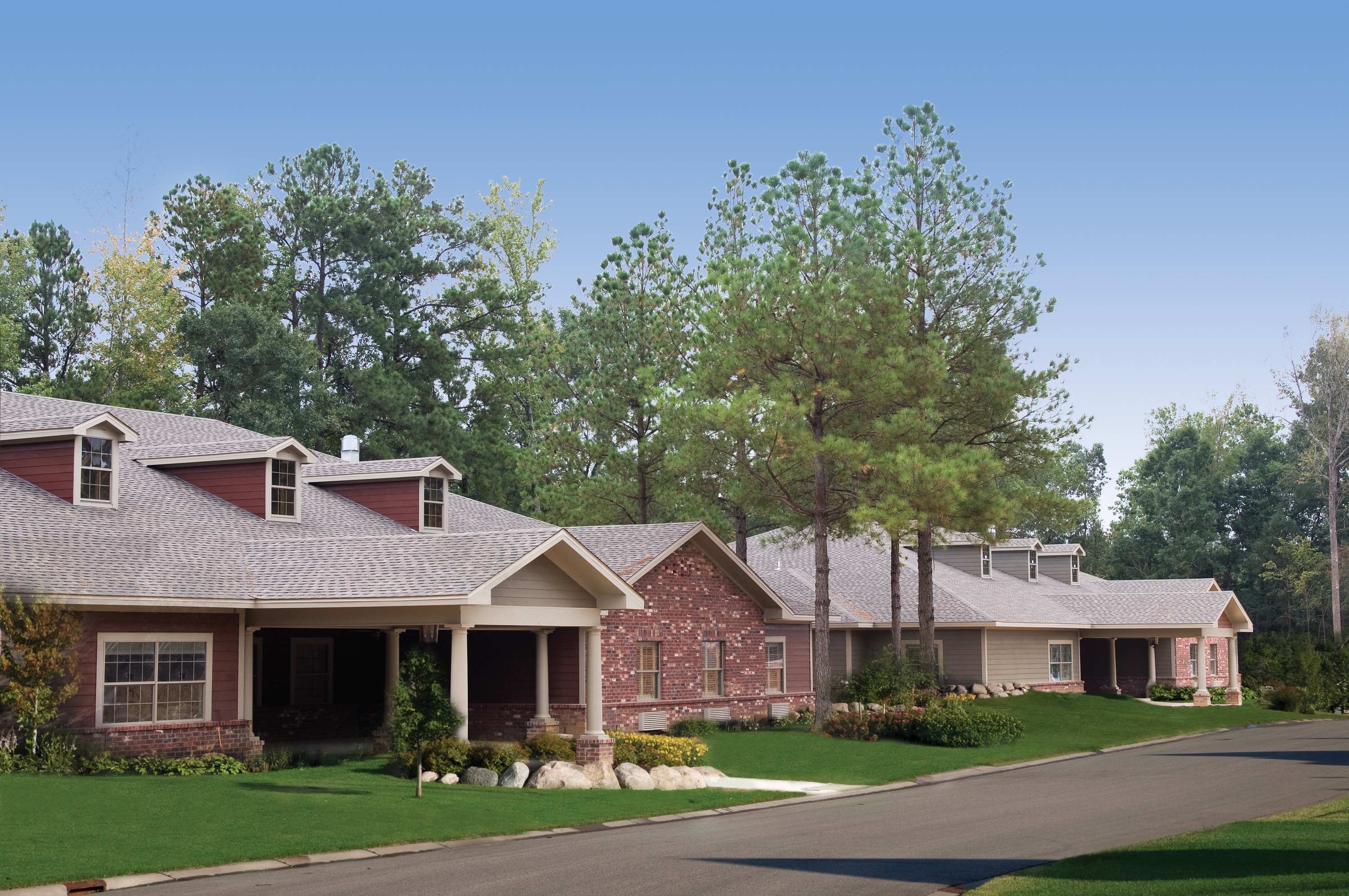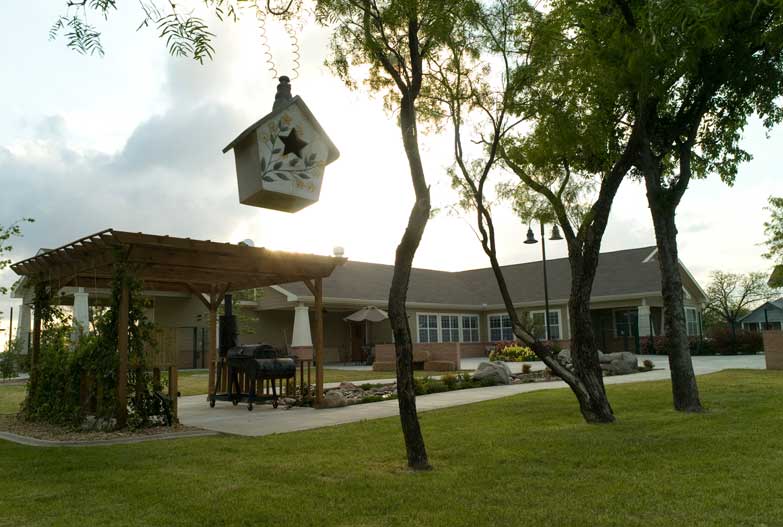Bill Thomas, MD, would like to clear up a misconception about his position on nursing facilities: He doesn’t want to eradicate them; he wants to eliminate the traditional, institutional model of care that was adopted by nursing facilities nearly 50 years ago. “I want to abolish the practice of institutionalizing frail, older people,” he says. “The old model of the nursing homes needs to go away and be replaced with new models.”
Although he understands that doing away with institutionalization may take the rest of his career—maybe even the rest of his life—Thomas is certain that it will happen.
For the uninitiated, Thomas is a well-known figure in the long

term care field who established the Eden Alternative in 1991 with the mission of transforming institutional approaches to care into a community “where life is worth living.”
Thomas’ passion is sometimes mistaken for a disdain of nursing facilities and their operators, he recognizes, but that is not the case, he says. “People sometimes confuse what I say; they think I want to padlock all nursing homes and walk away, and here’s why that’s not true: I remain a forceful advocate and supporter and leader of the Eden Alternative movement, which is dedicated to bringing culture change to nursing homes as they are today.”
He emphasizes that his plan is not “some kind of silly turn-off-all-the-lights-and-walk-away idea.” No, he says, “that’s not what I want—I want us to deliberately plan to outgrow the nursing homes. Let’s go beyond something that was handed to us half a century ago; let’s embrace and develop and implement new models of care.”
A Notable Shift
There is no denying that Thomas’ work in the culture change movement has helped the industry change the way it looks at long term care. Awareness and adoption of some components of culture change have gained considerable momentum in the past two decades and made even greater strides in the past several years.
A Commonwealth Fund survey of health care opinion leaders in 2008 found that 66 percent of respondents were familiar with the culture change movement, a dramatic shift from a 2005 survey in which 73 percent of respondents were unfamiliar with the term.
In a recent article in the journal Health Affairs, Commonwealth Fund President Mary Jane Koren credits the Centers for Medicare & Medicaid Services’ (CMS’) Eighth Scope of Work contract with the nation’s quality improvement organizations as one reason why providers have become more aware of culture change.
However, the battle is not entirely won, Koren notes. The fund’s “2007 National Survey of Nursing Homes” found that only 5 percent of directors of nursing said that their facilities completely met the description of a nursing facility transformed through culture change, and only 10 percent reported that they had initiated at least seven or more culture change practices.
“All told, about one-third reported adoption of some culture change practices,” Koren writes, “and another third said that they were planning to follow suit. But the rest of the respondents said that they were neither practicing nor planning to commence culture change.”
The difficulties of “operationalizing and maintaining culture change remain daunting” but are not insurmountable, she says. Speculation about why more providers have not adopted culture change on a wider scale typically centers on cost, access to capital, and perceived barriers to implementation, such as regulations that conflict with the person-centered approach that is so central to the movement.
Nonetheless, culture change has become a part of the long term care lexicon. The basic tenets of the movement—person-centered care, individualized treatment plans, and resident choice and autonomy—have become the standard by which quality care is measured.
Click
HERE for information about evaluation tools that help providers measure culture change in their facilities.
Influence Broadens
CMS has embraced many principles of culture change, which has led to significant changes in surveyor guidance and regulation clarifications, while a number of organizations born out of the movement have done their share to educate policy makers and the public about the need for a fundamental change in the way nursing facilities care for their residents.
The Pioneer Network, a nonprofit organization that provides education and networking to long term care stakeholders, runs 34 state coalitions dedicated to advancing culture change in their respective states. Coalition participants include provider associations, quality improvement organizations, state long term care ombudsmen, state survey agencies, culture change training and consulting organizations, academia, and citizen advocacy groups.
Further evidence of the powerful impact that culture change has had on the long term care industry are the recent changes to licensing requirements for nursing facility administrators and certification requirements for medical directors. Working with the Pioneer Network, the National Association of Long-Term Care Administrator Boards amended the study guide for licensed nursing facility administrators with new task statements in resident-centered care.
AMDA also worked with the Pioneer Network to create a separate domain and core competencies related to person-center

ed care. A similar curriculum will soon be released for licensed nurses.
For-Profits On The Scene
Although the majority of culture change early adopters have been nonprofit organizations, for-profits are beginning to take on this trend as their own. Large multifacility providers, such as Golden Living and Genesis HealthCare, Kennett Square, Pa., have jumped onto the bandwagon with companywide, patient-centered care initiatives that could rival many early adopters.
Fort Smith, Ark.-based Golden Living began its culture change efforts in 2002, with the implementation of the Resident-Centered Care Initiative (RCCI) in 10 pilot facilities in four states. By 2005, the RCCI concept expanded to 24 facilities in seven states. The following year, Golden Living initiated companywide education on the principles of culture change.
Ed McMahon, Golden Living’s director of Alzheimer’s care and quality of life, says these and other “very successful” programs have spurred a more resident-focused attitude throughout the company.
More recently, Golden created a 100-point scale that enables each facility to measure its level of adoption. The company has also introduced a new set of five domains that incorporate the principles of the Pioneer Network: individual empowerment, community involvement, staff empowerment, the home environment, and the dining experience.
The decision to turn its culture change initiatives into a companywide endeavor was not a difficult one, McMahon says. Among the most compelling indicators that Golden’s resident-centered programs were working was its increased market share. “In almost every market where we have a really transformed culture, we did better than our competitors…and that’s held true from when we first looked at the data in 2006 through today,” he says.
Golden facilities that have fully embraced culture change experience higher revenue across the board, as well as a dip in expenses per resident day, compared with its non-culture change facilities. Profits per resident day were also significantly better, he adds.
Golden’s payer mix and occupancy rates also improved, with a “significant increase” in the company’s percentage of Medicare and private-pay days, a decrease in the percentage of Medicaid days, and an increase in overall occupancy in highly transformed cultures.
“This really made the case for us to continue down the path of culture change,” he says, adding that companies that do not embrace culture change “will be left in the dust in the next several years.”
Advocates Tout Evidence
The Pioneer Network is working hard to prove to providers that culture change initiatives can be successful, and even lucrative. Through a grant from the Commonwealth Fund, the organization has been working on a project aimed at illustrating the market viability of the model.
The goal of the project is to accelerate adoption and support implementation and sustainability by articulating the operational linkages between person-directed care, quality of care, and financing.
In addition to a number of case studies, the project has produced an examination of how adopter outcomes translate into more quantifiable metrics and a benchmark of those metrics with national data and tools that assist providers in planning and budgeting processes for implementation, including an investment model outlining areas of investment and returns on investment in culture change.
Also in the works is the development of tools, measurements, and benchmarks that will help providers better understand the planning, decision-making, and budgeting of culture change to make it approachable and doable.
With support from the Commonwealth Fund, Pioneer Network policy analyst Amy Elliot compared the occupancy rates and operating margins of “early adopter” facilities with those of providers that had not yet adopted culture change. The results showed that culture change adopters have statistically significant higher occupancy rates longitudinally than the national average. More specifically, Elliot found that facilities with a sustained level of culture change between 2004 and 2009 maintained, on average, occupancy rates that were seven points higher than the national mean.
Adopters also experienced a boost in private-pay occupancy due in part to increased demand for culture change providers, according to the research. The process of implementing culture change initiatives was reported by adopters as a largely budget-neutral process, with costs in some areas of implementation offset by efficiencies in others.
“So, for example, a provider may lose some efficiencies when going from a single dining room to multiple dining rooms in neighborhoods,” Elliot says. “However, providers gain efficiencies in reduced plate waste or even areas like neighborhood laundry where costs are reduced due to universal workers, increased revenue from occupancy, and lower costs in supplements.”
Another bonus for culture change adopters, according to Elliot, was operating margins that were comparable to the national mean.
Going For The Green
One model of culture change that is gaining momentum at a fairly rapid rate is the Green House Project, a model that breaks the mold of institutional care by creating small homes for six to 10 (and sometimes 12) “elders” who require skilled nursing or assisted living care.
The homes, which are designed for the purpose of offering “privacy, autonomy, support, enjoyment, and a place to call home,” are a radical departure from traditional skilled nursing facilities and are considered to be the peak of culture change.
Each elder lives in a private room, designed to receive high levels of sunlight and easy access to all areas of the house, including the kitchen, laundry, outdoor garden, and patio.
According to the Green House Project Web site, the small size of a Green House home promotes freedom from the limitations of an institutional schedule. Meals are prepared in the open kitchen and served at a large dining table where staff, elders, and visitors enjoy pleasant dining.
NCB Capital Impact, a nonprofit community development organization that is pursuing the “rapid replication” of the Green House model through a grant from the Robert Wood Johnson Foundation, offers technical assistance and predevelopment loans to providers that are dedicated to developing and operating Green House homes.
When the first Green House homes were built in Tupelo, Miss., seven years ago, many observers were impressed but skeptical about how such a small, individualized, and expensive model could be sustainable.
Over the past few years, however, much of the skepticism has dissipated and been replaced with enthusiasm about the possibility that Green House homes can be replicated on a larger scale. As of March of this year, there were 79 Green House homes open in 14 states, and another 132 homes are either in development or under construction in another 12 states.
Robert Jenkens, director of the Green House Project at NCB Capital Impact for the past five years, says that in the early days providers were building just two to three homes per site. Today, however, projects are much bigger, some with 16-home campuses.
What’s more, in just the past two months, Jenkens says, he has had a flurry of requests for more information about Green House homes from for-profit providers.
“I think what’s happened is that it’s moved from something that people wanted to work and were comfortable testing in a small way, to something people now understand and believe works, and they’re willing to do full transformations,” he says. “I think it’s what we had hoped for. We broke through that nonprofit group into the for-profit, which had always been our hope.”
A For-Profit Takes The Plunge
The first for-profit Green House campus opened last September in Magnolia, Ark., a small town in the southwest corner of the state that is home to Southern Arkansas University and the World Championship Steak Cook Off.
Developed and operated by Summit Health Resources, the five Green House Cottages of Wentworth Place are clustered on a campus along with a 40-bed short-term rehabilitation facility. Summit President and Chief Executive Officer John Ponthie is passionate about the company’s latest venture; he views it as the future of long term care.
“We believe it represents the wants and needs of elders going forward,” he says. Ponthie puts his money where his mouth is: Summit opened its second Green House campus in February, and a third campus will open its doors in May.
The Magnolia campus is filled to capacity and has a waiting list, as does the second campus in Rison, Ark., about 85 miles northeast of Magnolia.
Ponthie says he was sold on the small house model as soon as he saw the first-ever Green House home in Tupelo. “I was blown away,” he says.
Ponthie, who also owns and operates traditional nursing facilities, admits that the upfront costs for his Green House campuses were approximately $2 million more than the cost of building a traditional facility. “But if you amortize over the useful life of a property, say 40 years—that’s our horizon—it will hold its value better,” he says. “Culture change is a marathon, not a sprint. We got to the point when we saw Green House homes and went ‘wow,’ it was an awakening for us.”
Ponthie says his Green House homes are the culmination of his best business sense, “what we know to be the best living environment,” he says.
Sound Investment
The financial outlays for Green House homes may be higher than for traditional nursing facilities, but new research indicates that over the long term, the model is a sound investment.
The first of two evaluation studies funded by the Robert Wood Johnson Foundation was written by Siobhan Sharkey, Sandra Hudak, and Susan Horn. It compared eight Green House homes with their legacy organization and a similar nursing facility within their community.
The studies found more direct care time—23

to 31 minutes more per resident per day—spent on direct care activities in Green House homes; increased engagement with elders by more than fourfold, outside of direct care activities; and less job-related stress experienced by direct care staff.
The study also found improved care outcomes among Green House residents—in the form of fewer in-house acquired pressure ulcers.
A second study, conducted by Barbara Bowers from the University of Wisconsin, Madison, studied the relationships of Shahbazim (principal caregivers in a Green House home), nurses, and the models of care and communication. They found comparable quality of care by Shahbazim even when formal supervisory responsibilities were removed from the equation.
The same study also revealed that the high level of direct care worker familiarity with elders led to very early identification of changes in condition, which led to timely interventions.
If Thomas is more passionate about anything other than the culture change movement, it’s Green House homes. As the creator of the concept, he views the Green House model as “culture change all the way through.”
He points to recent research, as well as his own experience, as proof that the model “puts more people, money, and more time at the bedside.”
He argues that comparing the cost of building a Green House home to that of a replacement facility is an apples-to-oranges situation. “I can build a replacement for a nursing home for less than Green House homes; however, I’ll have nonprivate rooms, large industrial kitchens, with large congregate dining rooms, and I’ll have a loading dock—all the things that come with a nursing home,” he says. “It’s not the same thing.”
In other words, building a lower-cost nursing facility would produce a facility that contains the same vestiges as the traditional model—complete with the institutional and impersonal environment, Thomas contends.
Long-term Consideration
Thomas advises looking at the long term. “So, I’ve got my Green House homes over here, which are highly individualized, with loads of privacy, a family-style kind of dining experience and food preparation, and you’ve got an update of a 1960s building with double-loaded corridors, brick, single-story nursing home,” he says.
“Let’s compare which model is more likely to succeed over the next 30 to 40 years while you’re paying off that mortgage—the Green House model or the standard nursing home replacement model.”
Thomas contends that any provider that makes this kind of decision is taking a risk. “If you’re a business person and you really have to make these hard decisions about the future of your business and you’re going to spend $10 to $12 million on a bet about the next 30 to 40 years, wow, you really have to be a risk taker to build replacement nursing homes built on conventional designs.”
He points to Ponthie’s venture to bolster his argument: “Ponthie is going head to head with a brand-new nursing home [in Magnolia], and he’s doing extremely well,” he says. “My point is this: It’s increasingly clear from CMS and state governments, from academia, from professional associations, more and more people are understanding that culture change represents that next turn in the road for long term care. I know there are people who will still deny that, but more reasonable people who follow what’s going on agree.”

Tabitha Health Services, Lincoln, Neb., opened the second Green House in the country in 2006. In July, it will open another one next door, and two more will be built across the street by next year.
Joyce Ebmeier, Tabitha’s vice president of strategic planning, is happy to tout the model’s viability. She believes that the Green House model is the best product on the market. “Green House homes are clearly a leader of the market,” she says, adding that they easily attract private-pay residents.
Even though Tabitha is a nonprofit organization, Ebmeier says that a mix of private-pay and Medicaid keeps it financially viable. “Don’t be afraid of it,” she says. “It works financially—it may not be a cash cow—but it works.”
States Adapt To Green House Needs
For providers like Ponthie, who do take the Green House model all the way, NCB Capital Impact is there to guide them through the process. Ponthie, for example, didn’t fund the entire cost of the project alone. The state of Arkansas gave him a grant to help offset the costs of training, architectural fees, and construction.
Carol Shockley, Arkansas’ director of the Office of Long Term Care in the Department of Human Services, worked with Jenkens and Ponthie on their project to push the new program through the legislature and change the regulations.
Shockley’s journey with the Green House Project began when she was looking for a place to spend the state’s civil money penalty funds. It was important to her to find something that would have a lasting impact on long term care in the state. “I didn’t want to waste the money,” she says.
After attending an Eden Alternative training session, Shockley says something clicked for her. “I thought the Eden principles were a value that we all needed to understand and employ when we’re looking at long term care in general.”
Included in the training was a video that featured the first Green House campus in Tupelo.
“I knew then that our civil money penalty funds could be used effectively if we could get the appropriate approval to spend it and change the laws that were in place regarding the funds and our staffing regulations to allow for universal workers,” Shockley says.
Shockley eventually came up with the idea to create an incentive grant for facilities that were willing to build a Green House home.
Provider Incentives
From there, Shockley says, she partnered with the Arkansas Health Care Association to draft two pieces of legislation, which were adopted and passed unanimously. “There was no opposition to the measures in any way,” says Shockley. “You have to consider that things are the right thing to do when you’re able to do it without a lot of opposition, and there was none on any front.”
In addition to changing the staffing regulations specifically to fit the Green House model, the state’s surveyors examined the life safety code issues to ensure that they would not pose a barrier to building a Green House. Shockley says that as part of an incentive for providers, she initiated a state plan amendment with CMS so that the state could reimburse Green House providers $4 per day more for Medicaid beneficiaries.
As an added bonus for culture change proponents in the state, Shockley invited NCB to train her surveyors in what a Green House is. As a result, about half of the state surveyors are now Eden associates, having completed a three-day training on the principles of the Eden Alternative. “We want them to appreciate the principles and that culture change can embrace a wide array of individual choices,” Shockley says.
The state has seen yet another benefit to the Green House initiative: It has sparked providers’ interest in pursuing other culture change practices. “More than just trying to get buildings complete, I’m hearing more and more about subtle changes that people are doing in their architecture to incorporate culture change initiatives,”
she says.
If the result is that providers are leaving behind what had become a “cookie cutter approach” to architecture, “that’s wonderful," she says. She is happy to hear that people are embracing changes that can be made in staff recruitment and retention, “that people are paying attention to what culture change can be,” she says.
“Those types of changes can be long lasting, and that’s what we wanted to spur out of our civil money penalty initiative.”
Jenkens touts the Arkansas initiative as an excellent example of creating incentives for providers to build Green House homes. “For anyone who’s trying to build a new building, the capital piece is really tough if you serve a significant majority of Medicaid residents,” he says. “The Arkansas state plan amendment is really a model for any state and one that CMS is happy for other states to pursue.”
In fact, Jenkens is happy to report, nearly all 50 states have policies that are conducive to building Green House homes. “Sometimes there is some little interpretive issues or some oddball physical pieces to work around,” he says. “But I would say we are pretty confident Green House will work in any state that you want to go into.”
Promoting The Spirit Of Culture Change
As Jenkens and Thomas assert, the Green House model may not be for everyone, but if educating providers about it sparks ideas that carry on the spirit of culture change, then they have done something right. Golden Living’s initiatives are a good example. McMahon admits that while the Green House model is his strongest competitor, the company was simply unable t

o replicate it on such a large scale—so it did the next best thing.
Having considered the Green House model, McMahon says, the company took the good points of the model and created their own. Golden renovated most of its existing buildings by adding neighborhoods, private rooms and baths, and shared dining and kitchen areas.
“We converted space so we’ve given up beds to create that self-contained feeling of a community so [residents] have their own dining areas in the neighborhood they live in, and they have a kitchen and have accessibility to food,” McMahon says.
Two of Golden’s newly constructed facilities, which opened last year, lean much more toward the Green House model. “It’s not a full Green House model, but we have smaller neighborhoods that we’re building with kitchens, dining areas, and living rooms so they can be shared. The difference between us and the Green House model is that we still share our housekeeping and dining services, which are done much more centrally, [but] neighborhoods are much more self-contained now,” McMahon says.
Creating Neighborhood Ambience
Hal Garland is executive director at one of Golden’s newly built facilities in North Carolina. In designing the 70,000-square-foot building, Garland says he and his team created six distinct neighborhoods, each with its own 42” flat-screen television, a courtyard, a dining room, kitchen, and pantry.
Each of the private bedrooms has its own bathroom and television as well, and two of the neighborhoods are exclusively short-term rehab units.
“We stock each kitchen with the food each resident wants, and families are encouraged to use the kitchen because it belongs to them, and we mean that,” says Garland. “The response has been great.”
The new building also boasts a new 4,000-square-foot therapy room with a Wii, a large flat-screen television, and a private entrance for the rehab patients. The only notable adjustment, says Garland, has been the addition of new supervisory positions to manage the six dining rooms."
“We went from using food carts to not using them, and we added an evening supervisor, a day shift supervisor, an activities person, and a nighttime receptionist,” he says. “That’s it."
McMahon believes it would be a mistake for any company right now not to go down the path of culture change, although being a privately held company has its advantages in this area. “Since we have become privately held we can take a much more long-range view of things, because we’re not going from quarter to quarter on earnings per share and reporting to the street,” he says. “It’ll be interesting how a publicly held company does it.”
For More Information:
- For a state-by-state listing of culture change incentives for providers, click HERE.
- To get more information about Green House homes, go to: www.thegreenhouseproject.org/
Meg LaPorte is Provider's managing editor.